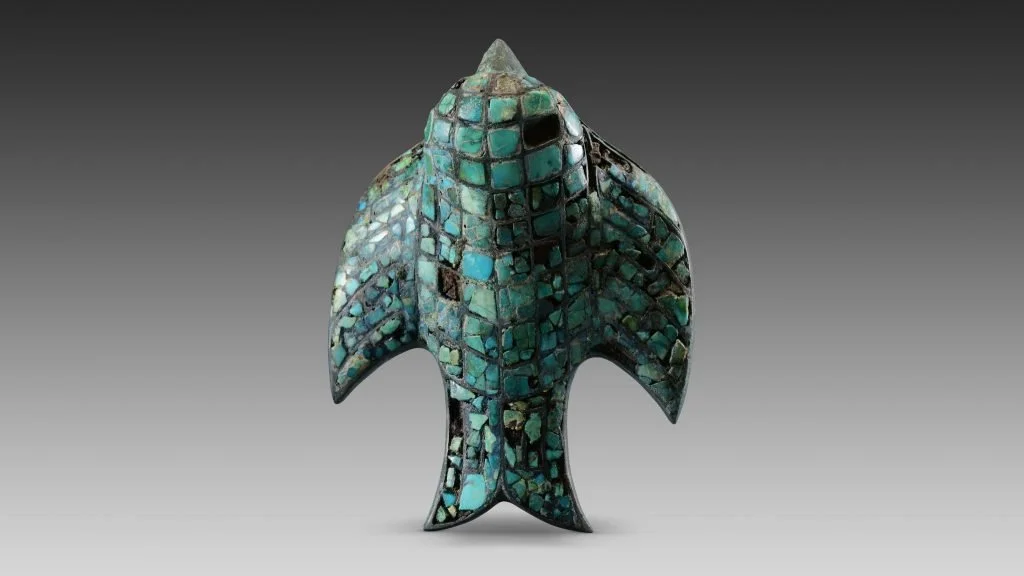Chinese archaeologists have discovered a massive site of rammed earth structures, graves, and bronze casting factories on the Loess Plateau in north-central China. These structures date back around 3,200 years.
A turquoise-inlaid ornament unearthed in Shaanxi province. Image: Shaanxi Academy of Archaeology WeChat.
The Shang dynasty, which lasted from 1600 to 1046 B.C.E., saw the establishment of a regional power at the site, which today is located in Shaanxi province. In Shang dynasty archaeology, it has been hailed as a significant breakthrough.
More than 200 burial artifacts have been discovered by archaeologists since their investigation began in June 2022. They want to learn more about the site's political and cultural ties to Yinxu, the Shang dynasty capital, which is some 350 miles to the east on the Yellow River plains of China.
A copper ornament with turquoise-inlay unearthed in Shaanxi province. Photo: Shaanxi Academy of Archaeology on WeChat.
Archaeologists found nine tombs there that belonged to high-ranking nobility, making it the largest site of its kind ever found in the region. They discovered a treasure trove of priceless artifacts inside, including equipment for horses and chariots, a turquoise-inlaid swallow-shaped pendant, bone implements decorated with animal designs, gold earrings, copper arrowheads and axes, and lacquerware.
The discovery of late Shang dynasty horse and chariot accessories in the Loess Plateau is significant because it may shed light on the evolution of burial practices. Additionally, researchers observed several aesthetic connections between the bronze, lacquerware, and bone artifacts and those previously discovered at other Shang dynasty sites, like as Yinxu.
A jade bird unearthed in Shaanxi province. Photo: Shaanxi Academy of Archaeology on WeChat.
The Shaanxi Academy of Archaeology posted on WeChat, China's all-in-one social media platform, that the early archaeological work "has revealed the highly developed bronze civilization that existed in northern Shaanxi during the late Shang Dynasty, one that was closely related to the Yinxu culture of the Central Plains, far exceeding previous understanding." In order to better understand the Shang Dynasty's political and geographic organization, it is crucial to study its archaeology in northern Shaanxi.
The Shaanxi excavation is one of four that have just lately been investigated by archaeologists. The Shang dynasty, which is China's earliest with well based archaeological and textual evidence, is currently enjoying something of a resurgence of rediscovery. China's National Cultural Heritage Administration claims that other artifacts have been discovered in the nation's capital Beijing, Hebei province, and Henan province.
Below are some pictures of the finds.
A jade face found in Shaanxi province. Photo: Shaanxi Academy of Archaeology on WeChat.
Gold earrings found by archeologists in Shaanxi province. Photo: Shaanxi Academy of Archaeology on WeChat.
A carved bone tool found by archeologists in the site in Shaanxi province. Photo: Shaanxi Academy of Archaeology on WeChat.












